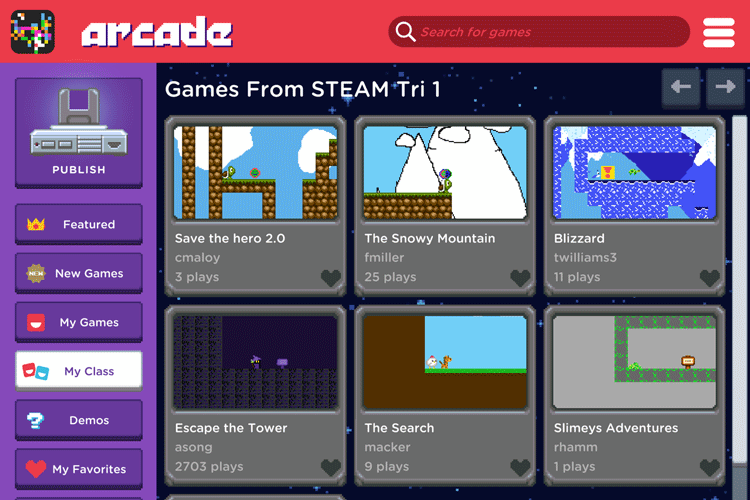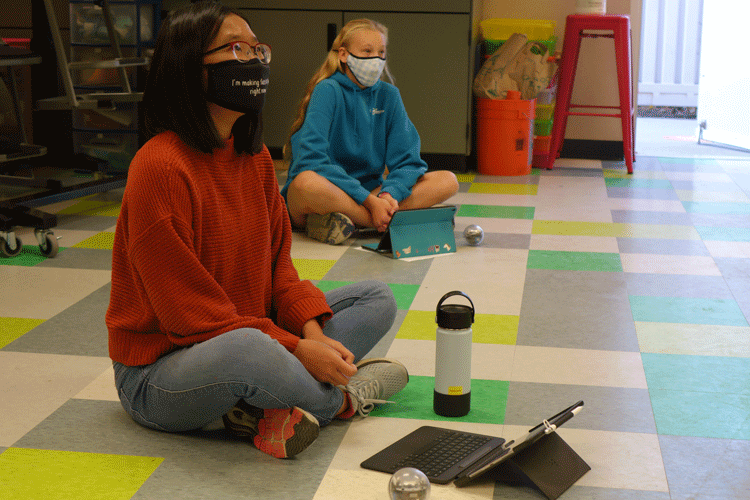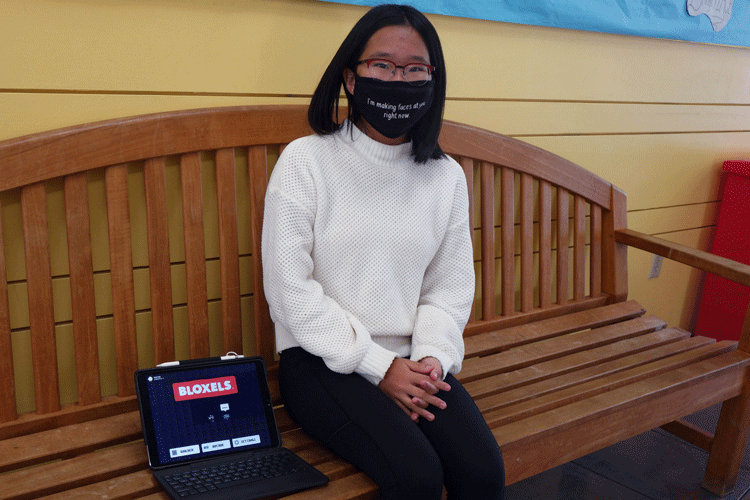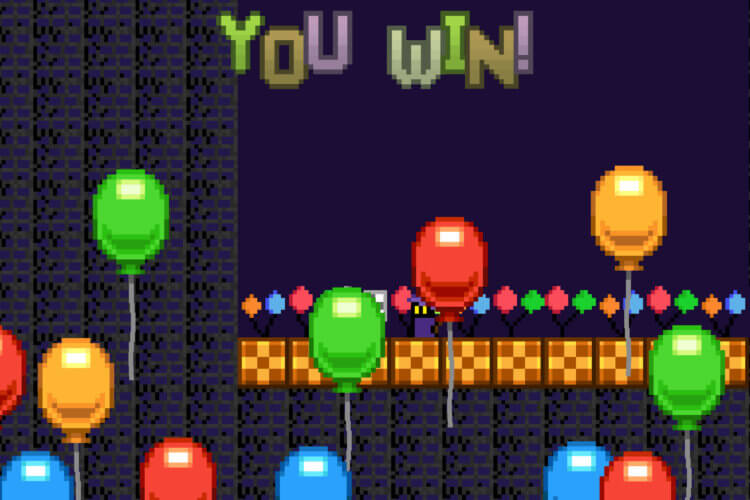Eighth Grader Alyssa Song had what she thought were realistic expectations for the video game she created and published in teacher Thanh Luong’s Middle School STEAM elective.
“I told my mom, ‘this game is not going to get more than 15 plays,’” she says. “That was my goal.”
Imagine her surprise when she checked the first day it was published on the game platform Bloxels and found that the game already had 500 plays.
“I said, ‘Wait a minute!’” she laughs. “I thought my eyes weren’t working, because it was late at night!”

Within 12 hours, Alyssa’s game, “Escape the Tower,” had more than 2,000 plays. After one week, it had more than 13,000 plays. And by the end of October, it had been played more than 30,000 times.
“I’m speechless,” Alyssa says. “I still don’t believe this is happening. It feels like a dream!”
The class project, which was a first for Luong and his students, was curriculum born of necessity—a COVID-19 work-around for Colorado Academy students working remotely.

‘Think about it like a movie’
In the Eighth Grade STEAM course, Luong likes to blend a bit of computer science with art and engineering. In past years, his students have done screen printing, sewing, even designed carrying cases. But this year, with half his class learning remotely on alternate days because of COVID-19, it would be a challenge to do a project that relied heavily on materials. Luong redesigned the class so the student project would be the creation of video games—something students could easily work on in the classroom and at home.
“I looked at video games and said, ‘What better way to combine art, design, and computer science?’” Luong says. “The students had to become production teams.”
“As soon as I heard the assignment, I said, ‘Oh my gosh, yes!,’” says Alyssa. “I really like video games, so this was a chance to learn game design.”
Luong began by walking students through the elements of a great video game. Is it engaging? Is there a great story? Is it difficult, but not so difficult that it’s frustrating?
“I told the students to think about it like a movie,” Luong says. “Players need to be captivated and go on a journey with your characters.”

Collaborating with each other, students in the class designed and created a variety of elements for a game—including characters, obstacles, and rewards—and loaded them into Bloxels, but each student had to work individually to create a story. When they finished, they played each other’s games and offered feedback. Then, they took their games home and asked people in their household to play, with Luong’s caveat that they could not offer advice or help.
“If you get a game on the market, it doesn’t come with an explanation,” he told the students. “People have to judge for themselves whether they want it, or they wasted their money.”
When the games were finished, the class submitted them to Bloxels with a request for publication. And that’s when it became obvious that Alyssa had a winner on her hands, as the numbers on Bloxels started to swell.

‘Now they are captivated’
Alyssa says that “Escape the Tower” tells the story of a “wizardly creature” running around a fortress with a knight who becomes his accomplice, trying to collect gems to defeat the boss at the end and escape the tower.
“Some of the obstacles he has to make it past are knights, dragons, and the final biggest obstacle of all is a chicken,” Alyssa says. “That’s supposed to be humorous, because you think the biggest enemy will be a ferocious monster, but it’s a chicken.”
In addition to the class time she spent on the game, Alyssa says she spent about an hour a day at home building the game. She believes one key to its online success is the fact that she spent many of those hours animating each movement of her characters. For example, she drew eight frames for her walking animation.
“If you animate the character, you give it personality,” she says. Ask her if she is a young Disney artist at work, and she laughs. “Oh no,” she says. “My animation is much simpler than any Disney movie!”

Luong says her classmates are delighted to see that Alyssa’s game has been such a success—they feel like they are friends of a video game celebrity. By the end of the class, he believes all the students have learned more than just how to build a video game. “They’ve learned collaboration, execution, how to engage an audience with art and story, and how to act on feedback,” he says. “They’ve also used coding to build characters, and now they are captivated by computer science.”
Alyssa praises Mr. Luong for teaching basic principles and then letting students work independently. And as she keeps one eye on the ever-rising number of people playing her game on Bloxels, she shares what she learned from this class.
“When I work hard, have a solid goal in mind, and love what I am doing, it’s easy to create something.”
